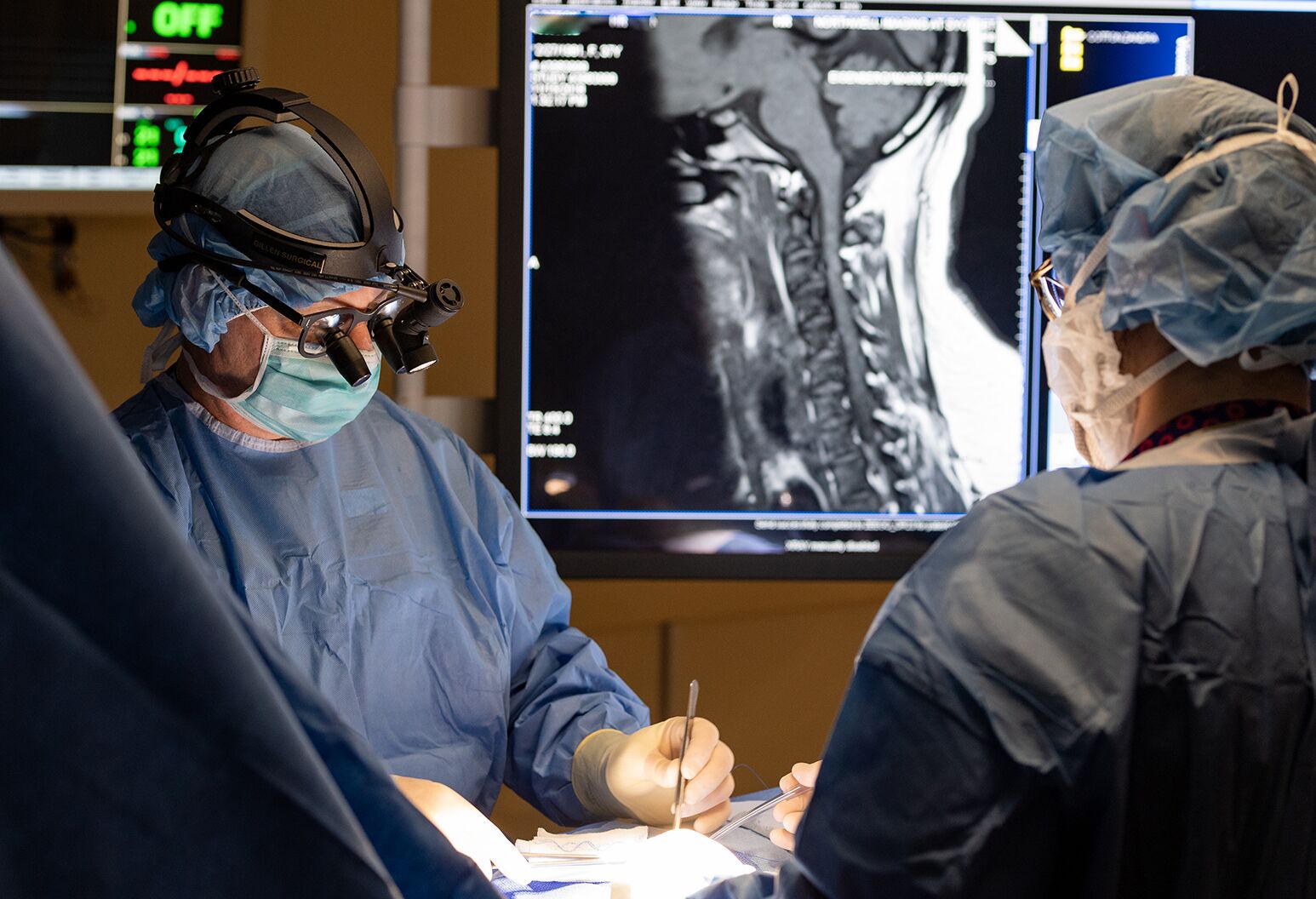The Relevance of Follow-Up Maintenance with the Best Spine Surgeons in St Louis MO
The Relevance of Follow-Up Maintenance with the Best Spine Surgeons in St Louis MO
Blog Article
A Review of Spine Conditions That Frequently Outcome in Surgical Therapies
Spine problems such as herniated discs, spinal stenosis, and degenerative disc disease often demand surgical interventions when conventional therapies fall short to reduce persistent signs. These conditions not just lead to significant pain but can additionally significantly hinder everyday performance and general high quality of life. Recognizing the nuances of each problem and the corresponding medical alternatives, such as discectomy or back combination, is important for reliable administration. As we discover these problems further, it comes to be evident that the decision-making process surrounding surgical therapy is multifaceted and warrants mindful factor to consider.
Herniated Discs
Although many individuals with herniated discs may discover alleviation with traditional treatments, surgical treatment comes to be a necessary consideration when signs and symptoms linger or worsen - best spine surgeons in st louis mo. A herniated disc happens when the soft inner gel of a spine disc protrudes via its outer layer, possibly pressing close-by nerves and leading to pain, tingling, or weak point in the extremities
Conservative monitoring usually consists of physical treatment, discomfort medicines, and corticosteroid injections, which aim to minimize swelling and boost feature. In situations where these approaches stop working to alleviate incapacitating symptoms, medical options might be discovered.
The most typical operation for herniated discs is a discectomy, which entails the elimination of the herniated part of the disc to ease pressure on the impacted nerve origin. In a lot more serious situations, back fusion might be essential to maintain the impacted vertebrae.
Clients are advised to review the possible risks and advantages of surgical procedure with their doctor to make a notified choice. Eventually, the objective of any kind of surgical intervention is to restore function, alleviate discomfort, and boost total quality of life for individuals struggling with herniated discs.
Spinal Stenosis
Spine constriction takes place when the rooms within the spinal column narrow, bring about increased pressure on the back cable and nerves. This problem can create in numerous areas of the spinal column, including the back and cervical areas, commonly because of age-related modifications, such as degenerative disc illness, joint inflammation, or enlarging of ligaments.
Patients with back constriction might provide with symptoms that consist of discomfort, feeling numb, tingling, or weakness, largely in the legs or arms. These signs and symptoms can be worsened by tasks that include standing or strolling, often leading individuals to look for alleviation via traditional treatments like physical therapy, medicines, or epidural steroid injections.
Nonetheless, when these non-surgical treatments stop working to provide appropriate relief, surgical options may be considered. Usual procedures for spinal stenosis include laminectomy, which involves the elimination of component of the vertebra to minimize stress, and spinal blend, which maintains the afflicted location. The choice to go after surgical treatment is generally based upon the severity of signs, the degree of practical impairment, and the total health and wellness of the individual. Motivate diagnosis and administration are important to prevent further neurological concession and enhance lifestyle.
Spondylolisthesis
Spondylolisthesis occurs when one vertebra slides ahead over one more, bring about imbalance of the back. This condition can arise from various factors, consisting of genetic problems, trauma, or degenerative adjustments in the spinal column. It is most commonly observed in the back area, particularly at the L4-L5 and L5-S1 levels.

When non-surgical strategies stop working to eliminate signs or when significant nerve compression is present, surgical treatment may be warranted. Surgical options can include spinal fusion or decompression procedures, intended at bring back alignment and relieving neurological signs and symptoms.
Degenerative Disc Illness

Clients with DDD often experience discomfort that might emit to the arms or legs, depending upon the influenced region of the spine. The problem can be detected via a mix of clinical analysis, imaging research studies, and patient background. Therapy choices usually begin with conservative steps, consisting of physical treatment, discomfort monitoring, and way of life adjustments. Nevertheless, when these methods fall short to offer adequate alleviation, surgical interventions have a peek at this website may be considered.
Surgical alternatives for DDD might consist of back blend or man-made disc substitute, focused on supporting the affected sector and alleviating pain (best spine surgeons in st louis mo). Ultimately, the selection of therapy is individualized, taking into account the seriousness of the problem, client wellness, and way of living aspects
Back Growths

Back lumps can arise from various factors, consisting of hereditary tendency, ecological influences, and pre-existing clinical problems. People may offer with an array of signs, including local pain, neurological shortages, weakness, or adjustments in digestive tract and bladder function, depending on the growth's size and area.
Diagnosis normally involves imaging studies such as MRI or CT checks, which assist mark the lump's attributes and effect on surrounding structures. In examining treatment options, the lump's area, type, and quality are important factors to consider. Surgical intervention might be necessitated to alleviate signs and symptoms, acquire a biopsy, or get rid of the lump completely. The objective of surgical treatment is usually to decompress neural aspects and stabilize the spinal column. Adjuvant treatments, including radiation or chemotherapy, may likewise be needed depending upon the growth's nature. Early discovery and treatment are important for enhancing outcomes in patients with spinal tumors.
Verdict
In summary, spine conditions such as herniated discs, spine stenosis, spondylolisthesis, degenerative disc disease, and spinal growths regularly necessitate surgical intervention as a result of their possible to cause considerable discomfort and useful problems. While conservative therapies might offer short-term alleviation, medical choices come to be crucial when signs continue or aggravate. Prompt diagnosis and intervention play a critical duty in recovering function and enhancing the high quality of life for afflicted individuals, highlighting the importance of detailed spine care.

Report this page